Introduction
Arthroscopic surgery, a minimally invasive procedure used for the diagnosis and treatment of joint disorders, has revolutionised the field of orthopaedic medicine. This technique allows surgeons to view the inside of a joint through a small camera, arthroscope, providing a clear view without the need for large incisions. The development and refinement of arthroscopic surgery have greatly improved the diagnosis and treatment of joint diseases and injuries, significantly reducing patient recovery time and increasing the success rate of surgical interventions.
The inception of arthroscopic surgery can be traced back to the early 20th century, but it was Dr. Masaki Watanabe who is credited with the development and popularisation of this technique in the 1950s and 60s. Dr. Watanabe’s work was groundbreaking; he developed the first practical arthroscopic instruments and performed thousands of arthroscopic procedures, laying the groundwork for what would become a standard practice in modern orthopaedics. His pioneering work in the field not only enhanced the capabilities of orthopaedic surgeons but also opened new horizons in the treatment and understanding of joint conditions.
This article aims to delve deeply into the evolution of knee surgery, with a particular focus on the contributions of Dr. Masaki Watanabe. We will explore the early days of arthroscopy, detailing how Dr. Watanabe’s innovations paved the way for the sophisticated techniques used today. By examining his life, work, and the advancements he spurred in knee surgery, we can gain a comprehensive understanding of the evolution of this critical field in medicine. This exploration will not only honor Dr. Watanabe’s legacy but also provide insights into the continual advancements in arthroscopic surgery, highlighting its importance in current medical practice.
1. Early Developments in Arthroscopic Surgery
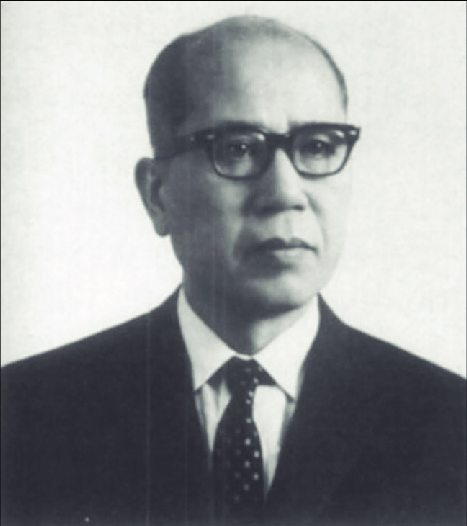
The origins of arthroscopy trace back to the early 20th century, a period marked by significant advancements in medical technology. One of the earliest pioneers in this field was Professor Kenji Takagi of Tokyo. In the 1910s, Takagi began experimenting with the use of a cystoscope for exploring the interior of knees in cadavers. This exploration, though primarily diagnostic, laid the foundational principles for arthroscopy. Despite his innovative work, technological limitations of the era restricted the practical application of these techniques.
It was under the tutelage and inspiration of Professor Takagi that Dr. Masaki Watanabe emerged as a key figure in the evolution of arthroscopy. Dr. Watanabe’s early innovations were critical in transitioning arthroscopy from a diagnostic tool to a therapeutic one. He developed the Watanabe No. 21 arthroscope, an instrument that represented a significant leap forward from its predecessors. This arthroscope was smaller, more versatile, and equipped with a lighting system, allowing for clearer visualisation of joint structures. Watanabe’s development of arthroscopic instruments marked the beginning of arthroscopy as a practical surgical technique.
However, the journey of arthroscopy from a novel concept to a widely accepted medical procedure was fraught with challenges and limitations. Early arthroscopes suffered from poor visualisation, limited range of movement, and lacked specialised instruments for conducting surgical procedures. Surgeons initially struggled with the complexity of maneuvering these instruments within the confined space of a joint. Additionally, the understanding of joint pathology during this era was still in its nascent stages, which often led to cautious and limited use of arthroscopic techniques.
Despite these obstacles, Watanabe’s relentless efforts and ingenuity led to the gradual acceptance and refinement of arthroscopic surgery. He meticulously documented his findings and procedures, contributing to a growing body of knowledge that would guide future generations of orthopedic surgeons. The development of new arthroscopic instruments under his guidance, such as probes, graspers, and scissors, expanded the scope of arthroscopic procedures beyond mere diagnosis to actual treatment.
Dr. Watanabe’s work in refining arthroscopic techniques played a crucial role in establishing arthroscopy as a vital tool in modern orthopedics. These early innovations, though met with skepticism and challenges, laid the groundwork for today’s advanced arthroscopic procedures, offering a testament to the perseverance and ingenuity of pioneers like Dr. Masaki Watanabe. The challenges of the past, once overcome, have led to the highly effective and minimally invasive arthroscopic techniques used in contemporary medical practice (1).
2. Dr. Masaki Watanabe: Life and Career
Dr. Masaki Watanabe, born in Nagano, Japan in 1911, is universally acclaimed as the “father of modern arthroscopy.” His pioneering work in developing advanced endoscopic instruments post-World War II established arthroscopy as a cornerstone of modern orthopedic care. Watanabe’s medical journey, which began at Tokyo Imperial University with his graduation in 1937, was under the guidance of Professor Kenji Takagi.
While Watanabe is credited with significant advancements in arthroscopy, it’s important to recognize the earlier contributions of figures like Dr. Severin Nordentoft, who in 1912 presented “On Arthroscopy, a New Clinical Investigation Technique of the Joint Cavities.” The first report of a diagnostic knee arthroscopy was in 1912 by the Danish surgeon, Severin Nordentoft, who called the approach “arthroscopia genu.”(2)(6).
Nordentoft’s work, though initially overlooked, laid the groundwork for the innovations brought forth by Watanabe, whose efforts transformed arthroscopy into a widely acknowledged and essential surgical technique. This historical context, enriched by Lorraine Bigony’s perspective on the evolution of arthroscopic surgery, highlights the cumulative progress and key contributions in this field
In 1951, Watanabe produced the 4 mm No. 13 arthroscope by modifying a pediatric cystoscope, marking a significant advancement in arthroscopic technology. This innovation was a precursor to his most notable achievement, the development of the Watanabe No. 21 arthroscope in 1958. The No. 21 arthroscope, with its superior lens and design, became the standard in arthroscopic procedures for the following decades (2).
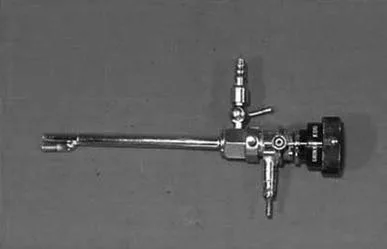
Watanabe’s early arthroscopic procedures, initially performed on animal models, led to his first arthroscopy on a human patient in 1955, where he removed a giant cell tumor. His pioneering work led to the world’s first arthroscopic meniscectomy in 1962 and further refinements in arthroscopy, including the No. 22 arthroscope with fiber optic light in 1967 and the ultra-thin No. 25 scope, or “needlescope,” in 1970. He presented his work at the SICOT congress in Barcelona in 1957, showcasing color photographs and a video of the procedure. However, at the time, open knee surgeries were more commonly accepted (3)(4).
Watanabe’s dedication to teaching and mentorship attracted surgeons from around the world. Notable students include Dr. Robert W. Jackson from Canada, who observed Watanabe’s surgeries in 1964 and became a founding member and vice-President of the International Arthroscopy Association. Dr. Richard O’Connor from the United States (5), trained by Watanabe in 1971, was instrumental in performing arthroscopic partial meniscectomies in North America. Furthermore, Dr. Samuel Ward Casscells from Thomas Jefferson Medical College collaborated with Watanabe, introducing the arthroscope to North America and developing standard arthroscopic techniques in English for the first time in 1971.
In 1972, Watanabe was involved in founding the International Arthroscopy Association and was its first president. The association, now known as the International Society of Arthroscopy, Knee Surgery, and Orthopaedic Sports Medicine (ISAKOS), continues to be a leading organization in the field. Watanabe’s contributions were recognised when he was awarded the Asahi Prize in 1983.
Dr. Watanabe’s passion for arthroscopy and his impact on orthopedic surgery were profound. He frequently expressed pride in the No. 21 arthroscope, referring to it as one of his “grandchildren.” A generation of world-renowned arthroscopic surgeons owe their training to his diligent and kind tutelage. After a distinguished career, he retired and passed away in October 1995, leaving an indelible mark on the world of arthroscopic surgery
3. Technological Advances in Arthroscopy
Arthroscopic surgery has seen significant technological advancements, evolving from its early beginnings in the 20th century to a sophisticated, minimally invasive surgical technique today. As mentioned earlier, the foundations of arthroscopic surgery were laid by pioneers like Dr. Severin Nordentoft and later advanced by Dr. Masaki Watanabe. Watanabe’s work, particularly the development of the Watanabe No. 21 arthroscope in 1958, marked a turning point in arthroscopic technology, introducing improved optics and miniaturization (2).
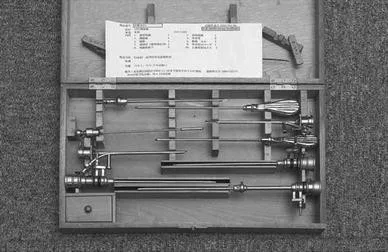
Advancements in Visualization: Technological advancements in visualization, such as high-definition video cameras and fiber optics, significantly enhanced the clarity of images obtained during surgery. These improvements, coupled with the development of specialized instruments, allowed for more complex and precise surgical techniques (6).
Instrumentation and Technique: The development of specialized instruments such as probes, and graspers enabled more intricate surgical procedures. Techniques evolved, allowing surgeons to repair or remove damaged tissue with minimal invasiveness, leading to faster patient recovery.
Fiber Optics and Lighting: The integration of fiber optics revolutionized the lighting in arthroscopic surgery, providing clearer and brighter images. This development was crucial in performing delicate surgeries that require precision and accuracy.
Watanabe’s No. 22 arthroscope, with its fiber optic light source, marked a significant progression in the field. His innovations laid the foundation for the modern arthroscopes used today, facilitating a range of complex procedures from meniscectomies to ligament reconstructions.
Digital Imaging and Computer-Assisted Surgery: The integration of digital imaging and computer-assisted surgery further revolutionized arthroscopic procedures, providing detailed 3D reconstructions for pre-operative planning and real-time guidance during surgeries.
Robotic Assistance: Recent advancements include the introduction of robotic-assisted arthroscopy, enhancing precision and control, potentially reducing the risk of human error (7).
4. Impact of Watanabe's Work on Modern Knee Surgery
Dr. Masaki Watanabe’s influence on modern knee surgery and orthopedics is profound and multifaceted. His innovations, particularly in arthroscopy, have significantly transformed the practices and approaches in these fields.
4.1 Impact of Watanabe's Work on Modern Knee Surgery
Watanabe’s development of the Watanabe No. 21 arthroscope revolutionized knee surgery by enabling minimally invasive procedures. This breakthrough allowed for detailed visualization within the joint, reducing the need for open surgeries. His advancements in optics and lighting within the arthroscope provided surgeons with clearer images, facilitating more precise and safer surgical interventions. These innovations led to the widespread adoption of arthroscopic techniques in knee surgeries, ranging from diagnostic explorations to complex repairs of ligaments and menisci.
4.2 Broader Implications for Orthopedic Surgery
Watanabe’s work extended beyond knee surgery, impacting the broader field of orthopedic surgery. His techniques and instruments advanced the understanding of joint pathologies, influencing treatment approaches for various joint-related conditions. The minimally invasive nature of arthroscopic surgery, championed by Watanabe, became a preferred method due to its advantages in patient recovery and reduced risk of complications. His dedication to teaching and sharing his knowledge internationally played a critical role in making arthroscopy a fundamental part of orthopedic curriculums and practices worldwide.
4.3 Enhancing Patient Care
The adoption of arthroscopic techniques has significantly improved patient care. Patients benefit from shorter hospital stays, faster recovery times, and less post-operative pain compared to traditional open surgeries. These benefits stem directly from the minimally invasive approach that Watanabe’s work made possible. Additionally, the ability to accurately diagnose and treat joint issues with arthroscopy has led to improved patient outcomes and satisfaction.
4.4 Legacy and Current Technologies
Current technologies in knee surgery, such as modern arthrometers like DYNEELAX® and GNRB®, are a testament to Watanabe’s lasting legacy. These devices, used for measuring the stability and strength of knee ligaments, embody the principles Watanabe set forth: minimally invasive yet highly effective diagnostic and therapeutic tools. They represent the ongoing evolution and integration of diagnostic and therapeutic technologies in knee surgery, which Watanabe pioneered.
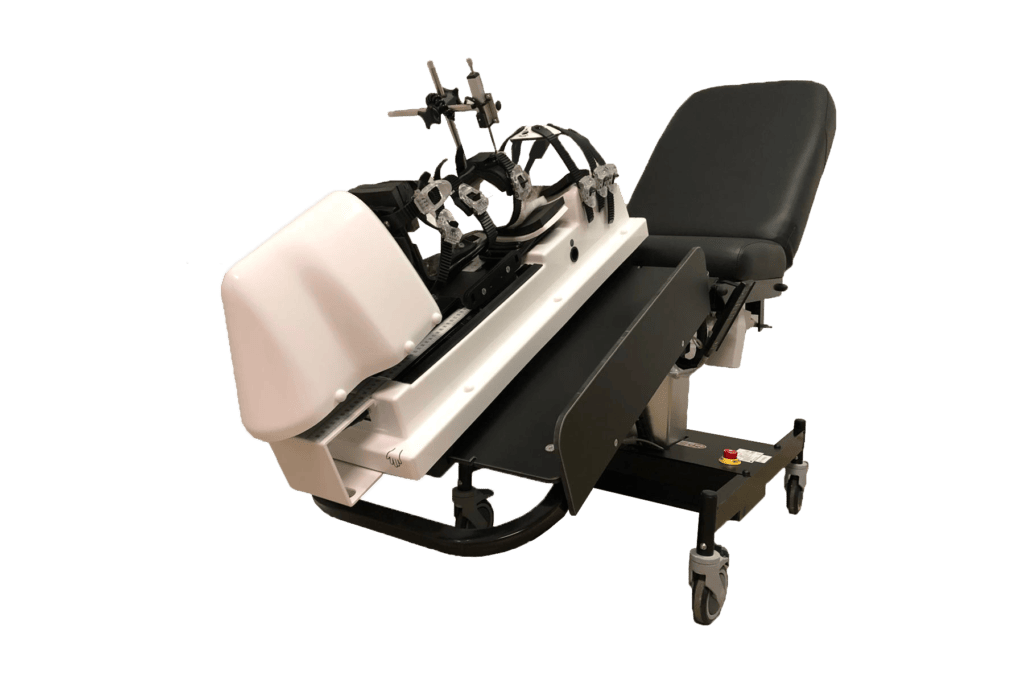
In summary, Dr. Masaki Watanabe’s work has had a transformative impact on knee surgery and orthopaedics at large. His innovations in arthroscopy paved the way for minimally invasive techniques that have become the standard in joint care, enhancing patient outcomes and continuing to influence new technological developments in the field.
5. Future Directions in Arthroscopy and Knee Surgery
The future of knee surgery and arthroscopy is poised to see significant advancements, building upon the legacy of pioneers like Dr. Masaki Watanabe. The evolution in this field is driven by a deeper understanding of knee anatomy, biomechanics, and a continual push towards minimally invasive, preservative, and regenerative techniques.
5.1 Anatomic ACL Reconstruction
The focus is shifting towards anatomic reconstruction of the ACL using individualized approaches. This method aims to restore the native anatomy of the knee, addressing the unique biomechanical needs of each patient(8).
5.2 ACL Repair and Regenerative Techniques
There is renewed interest in ACL repair, especially with the advent of technologically advanced instruments and implants. The goal is to restore knee stability while preserving the native anatomy and neurovascular supply of the ligament. This approach is complemented by the use of regenerative techniques like stem cell therapy and platelet-rich plasma (PRP) to enhance healing(8).
5.3 Internal Brace Ligament Stabilization
This technique, which has shown promising results in stabilizing ACL repairs, involves reattaching the proximal ACL rupture with a looped suture and using a non-absorbable braided suture for mechanical protection. It aims to reduce failure rates and enhance the healing process(8).
5.4 Individualized and Double-Bundle ACL Reconstruction
There is an increasing recognition that a standardized approach may not be suitable for all ACL reconstructions. The trend is towards individualizing the surgery based on anatomical variations and patient-specific needs. Despite mixed opinions on the efficacy of double-bundle versus single-bundle reconstructions, the focus remains on optimizing knee stability and functionality(8).
5.5 Graft Choices in ACL Reconstruction
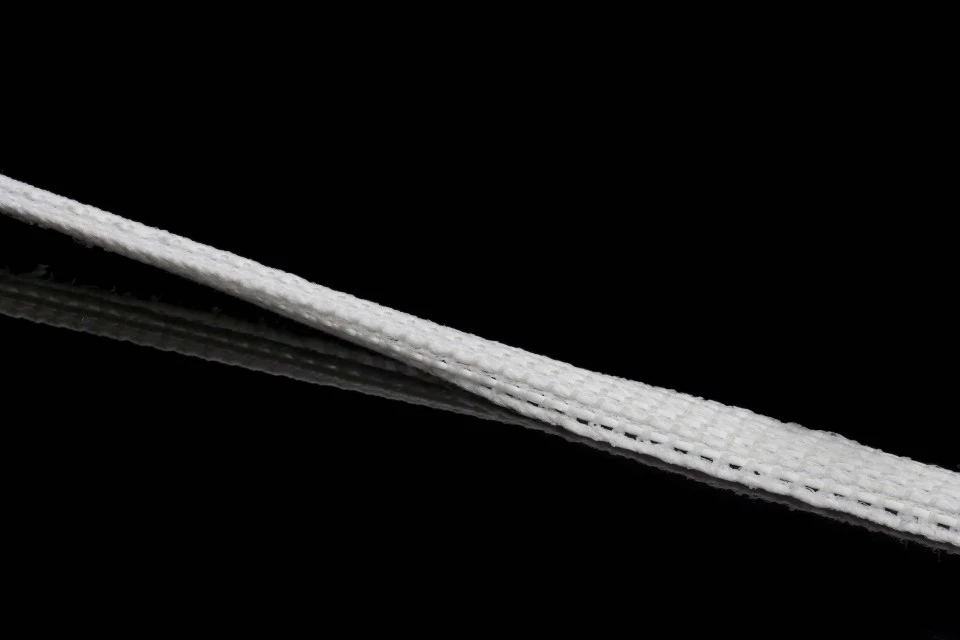
The choice of grafts for ACL reconstruction is evolving, with a shift towards using hamstring tendons due to their lower morbidity rates compared to patellar tendons. This development highlights the importance of tailoring surgical approaches to minimize complications and enhance recovery. More and more synthetic Grafts are also being developed(8).
5.6 Augmentation of Meniscus Repairs
Techniques for meniscus repair are advancing, with the application of fibrin clots, PRP, and other scaffolds to improve healing rates. The future may see more innovative methods like arthroscopic collagen sheath wrapping of complex tears, aiming to enhance the success rates of meniscal preservation(8).
5.7 Meniscal Substitution
In cases where meniscus repair is not feasible, meniscal substitution with allografts or artificial scaffolds is becoming a viable option. This approach is significant for preserving knee function and preventing the progression of osteoarthritis(8).
5.8 Integration with Modern Technologies
Products like DYNEELAX® and GNRB®, which assess ligament stability and joint health, are integral to this evolving landscape. They exemplify the fusion of diagnostic precision with therapeutic intervention, reflecting the ongoing advancements in knee surgery and arthroscopy.
The future of this field is characterized by a blend of technological innovation, individualized patient care, and a shift towards biological healing and preservation. As these advancements unfold, they promise to further improve patient outcomes and expand the capabilities of knee surgery and arthroscopy.
Conclusion
In retracing the remarkable journey of arthroscopic surgery, we invariably return to the groundbreaking work of Dr. Masaki Watanabe. His pioneering spirit and innovative techniques laid the foundation for a field that has since transformed the landscape of orthopaedic medicine. Today, as we stand on the cusp of new technological advancements, it is clear that the legacy of Dr. Watanabe continues to resonate in every fiber of this evolving discipline.
The evolution of arthroscopic surgery is a testament to the relentless pursuit of improvement in medical science. From the rudimentary tools of the past to the sophisticated equipment of today, such as the DYNEELAX® and GNRB® arthrometers, each advancement has brought us closer to more precise, less invasive, and more effective treatments. These modern arthrometers, embodying the spirit of innovation and precision, offer orthopedic surgeons enhanced capabilities in diagnosing and treating joint conditions, thus continuing the pioneering work initiated by Dr. Watanabe.
As we look to the future, the field of arthroscopic surgery promises even greater advancements and possibilities. Embracing the legacy of Dr. Watanabe, the medical community continues to push the boundaries of what is possible, ensuring that patients receive the best care possible, aided by cutting-edge technology and techniques. In this journey, the role of continuous learning, innovation, and adaptation remains paramount.
We invite our readers to not only reflect on the history and achievements of arthroscopic surgery but also to engage with the ongoing developments in this field. It is through this ongoing dialogue and exploration that we honor the past, make the most of the present, and pave the way for a brighter, more advanced future in orthopedic care.
Medical References
- Kouk, S. (2021). The Evolution of Arthroscopy: A Historical Perspective. (https://pubmed.ncbi.nlm.nih.gov/33704034/)
- DeMaio, M. (2013). Giants of Orthopaedic Surgery: Masaki Watanabe MD. Clinical Orthopaedics and Related Research, 471, 2443-2448. DOI: 10.1007/s11999-013-3052-1
- ISAKOS Website – International Arthroscopy Association – History of the IAA: https://www.isakos.com/archives/IAA-History
- SICOT Website – History of Orthopaedics: https://www.sicot.org/enewsletter-94-history-orthopaedics
- History-of-Arthroscopic-Surgery-Masaki-Watanabi – O’Connors Textbook. Download PDF Document or the Rewritten Word Document Without Images
- Bigony, L. Arthroscopic surgery: a historical perspective. Orthop Nurs. 2008; 27: 349-354. DOI : 10.1097/01.NOR.0000342421.67207.68
- Hans H. Pässler, Yuping Yang, 2011 – The Past and the Future of Arthroscopy. DOI: 10.1007/978-3-642-15630-4_2
- Rao, N. N., Pardiwala, D. N. (2020). Recent advances and future trends in knee arthroscopy. Journal of Arthroscopic Surgery and Sports Medicine, 1(1). DOI: 10.25259/JASSM_15_2020






